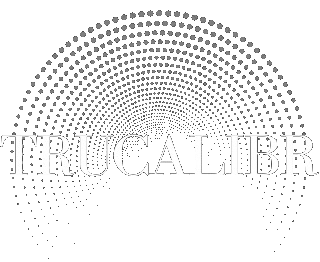Music has been an integral part of human civilization for centuries, transcending cultural boundaries and connecting people through the universal language of sound. Beyond its artistic and entertainment value, recent scientific research has shed light on the profound effects that music and certain frequencies can have on our physical, emotional, and cognitive well-being.
From ancient civilizations that used sound for healing purposes to modern-day music therapy, the power of music has been recognized and harnessed for its ability to influence our thoughts, emotions, and even bodily functions. As we delve deeper into the mysteries of sound and frequency, we uncover a vast realm of possibilities that can enhance our lives in ways we never imagined.
According to a study by the University of Missouri, listening to upbeat music can increase the body’s production of antibodies, boosting the immune system’s ability to fight off illnesses. Another study by Stanford University found that listening to music can reduce anxiety and pain levels in patients undergoing surgery or other medical procedures.
Table of Contents
- Music and Emotions
- Music and Physical Health
- Music and Cognitive Function
- The Science of Sound and Frequency
- Music Therapy: Harnessing the Power of Sound
- Additional Resources and Further Reading
- Practical Tips and Actionable Advice
- Conclusion
Music and Emotions
Music has the remarkable ability to evoke a wide range of emotions within us, from joy and happiness to sadness and melancholy. This emotional connection is deeply rooted in our brain’s response to sound and the intricate interplay between music and the limbic system, the part of the brain responsible for processing emotions.
Research has shown that different types of music can influence our emotional states in distinct ways. For example, upbeat, energetic music with a fast tempo and major keys tends to elicit feelings of happiness and positivity, while slower, melancholic music in minor keys can evoke feelings of sadness or introspection.
Furthermore, music has the power to transport us to specific moments in our lives, triggering nostalgic emotions and memories associated with those experiences. This phenomenon is known as the “reminiscence bump,” and it highlights the profound connection between music, emotions, and our personal histories.
Music and Physical Health
Beyond its emotional impact, music has also been found to have significant effects on our physical health and well-being. Research suggests that certain types of music and frequencies can influence our body’s physiological responses, including heart rate, blood pressure, and even brain wave patterns.
One particularly intriguing area of study is the effect of binaural beats, which are created by exposing each ear to a slightly different frequency. This creates the illusion of a third tone, which can induce specific brain wave patterns associated with different states of consciousness, such as relaxation, focus, or even deep sleep.
Additionally, music has been shown to have therapeutic benefits for a variety of conditions, including chronic pain, anxiety, and depression. The rhythmic patterns and melodic structures of certain types of music can stimulate the release of endorphins and other feel-good chemicals in the brain, promoting a sense of relaxation and well-being.
Music and Cognitive Function
The influence of music extends beyond the realms of emotion and physical health; it also has a profound impact on our cognitive functioning and ability to learn and retain information.
Research has shown that listening to certain types of music, particularly classical or instrumental music, can enhance focus, concentration, and memory retention. This phenomenon, known as the “Mozart Effect,” has been the subject of numerous studies and has been attributed to the intricate patterns and structures present in classical compositions.
Furthermore, music has been found to improve spatial-temporal reasoning, which is the ability to visualize and manipulate objects in three-dimensional space. This skill is particularly important in fields such as engineering, architecture, and mathematics, and the incorporation of music into educational settings has shown promising results in enhancing these cognitive abilities.
The Science of Sound and Frequency
To fully appreciate the profound effects of music, it is essential to understand the fundamental principles of sound and frequency. Sound is a wave that propagates through a medium, such as air or water, and is characterized by its frequency, which is measured in Hertz (Hz).
Different frequencies have been associated with varying effects on the human body and mind. For example, low frequencies between 20-60 Hz have been linked to feelings of relaxation and reduced stress levels, while higher frequencies around 500-600 Hz are believed to enhance focus and concentration.
Additionally, certain frequencies have been found to resonate with specific organs or systems within the body, a phenomenon known as “cymatics.” This has led to the development of various sound therapy techniques that utilize specific frequencies to promote healing and balance within the body.
Music Therapy: Harnessing the Power of Sound
The recognition of music’s profound effects on the human experience has given rise to the field of music therapy, a specialized form of therapeutic intervention that utilizes music and sound to address a wide range of physical, emotional, and cognitive challenges.
Music therapists work with individuals of all ages and backgrounds, employing various techniques such as songwriting, improvisation, and listening exercises to promote healing, self-expression, and personal growth. Music therapy has been shown to be effective in treating conditions like anxiety, depression, autism spectrum disorders, and even neurological conditions such as Parkinson’s disease and stroke recovery.
One particularly powerful aspect of music therapy is its ability to facilitate non-verbal communication and expression, which can be especially beneficial for individuals who may have difficulty verbalizing their emotions or experiences. Through the universal language of music, individuals can find a safe and expressive outlet for their thoughts and feelings.

Additional Resources and Further Reading
For those interested in exploring the topic of music’s effects on the human experience further, here are some recommended resources:
- American Music Therapy Association – A professional organization dedicated to the advancement of music therapy.
- “This Is Your Brain on Music” by Daniel J. Levitin – A fascinating book that explores the neuroscience behind music’s impact on the human brain.
Frequently Asked Questions:
Q: Can music therapy be used to treat physical conditions?
A: Yes, music therapy has been shown to be effective in treating various physical conditions, including chronic pain, Parkinson’s disease, and stroke recovery. The rhythmic patterns and melodic structures of certain types of music can promote physical rehabilitation and aid in the recovery process.
Q: Are there any risks associated with using binaural beats or other sound therapies?
A: While generally considered safe, there is a potential risk for individuals with certain medical conditions, such as epilepsy or migraines, to experience adverse effects from exposure to binaural beats or other forms of sound therapy. It is always recommended to consult with a healthcare professional before engaging in these practices.
Practical Tips and Actionable Advice
To help you harness the power of music and sound in your daily life, here are some practical tips and actionable advice:
1. Create a Personalized Playlist
Curate a playlist of songs or musical compositions that resonate with you on an emotional level. This can be your go-to playlist for boosting your mood, reducing stress, or enhancing focus and productivity.
2. Explore Binaural Beats and Frequency-Specific Music
Experiment with binaural beats or frequency-specific music designed to induce specific brain wave patterns. There are many online resources and apps available that offer guided sessions or pre-made tracks for various purposes, such as relaxation, focus, or sleep.
3. Incorporate Music into Your Exercise Routine
Create a motivating playlist to accompany your workouts or exercise sessions. The right music can not only make the time fly by but also improve your endurance and overall performance.
4. Explore Music Therapy or Sound Healing Practices
Consider seeking the guidance of a qualified music therapist or sound healing practitioner if you are interested in using music or sound to address specific physical, emotional, or cognitive challenges.
5. Experiment with Different Genres and Styles
Don’t limit yourself to a single genre or style of music. Explore different types of music and observe how they affect your emotions, energy levels, and overall well-being. This can help you discover new ways to harness the power of music in your life.
Conclusion
Throughout this comprehensive exploration, we have delved into the profound and multifaceted effects of music and sound on the human experience. From influencing our emotions and physical well-being to enhancing cognitive function and facilitating healing, the power of music is truly remarkable.
The science behind sound and frequency has unveiled a vast realm of possibilities, allowing us to harness the therapeutic and transformative potential of these auditory vibrations. Whether through binaural beats, music therapy, or simply immersing ourselves in our favorite tunes, we have the ability to tap into the profound benefits that music offers.
As we continue to unravel the mysteries of sound and its impact on the human body and mind, we open ourselves up to new avenues of self-discovery, personal growth, and holistic well-being. By embracing the power of music and incorporating it into our daily lives, we can unlock a world of possibilities and enhance our overall quality of life.
So, let the melodies resonate within you, and embrace the transformative power of music. Whether you seek emotional solace, physical healing, or cognitive enhancement, the answer may lie in the harmonies that have captivated humanity for centuries.
Embark on this journey of sound and discovery, and let the rhythms guide you toward a life filled with harmony, balance, and profound connection.







